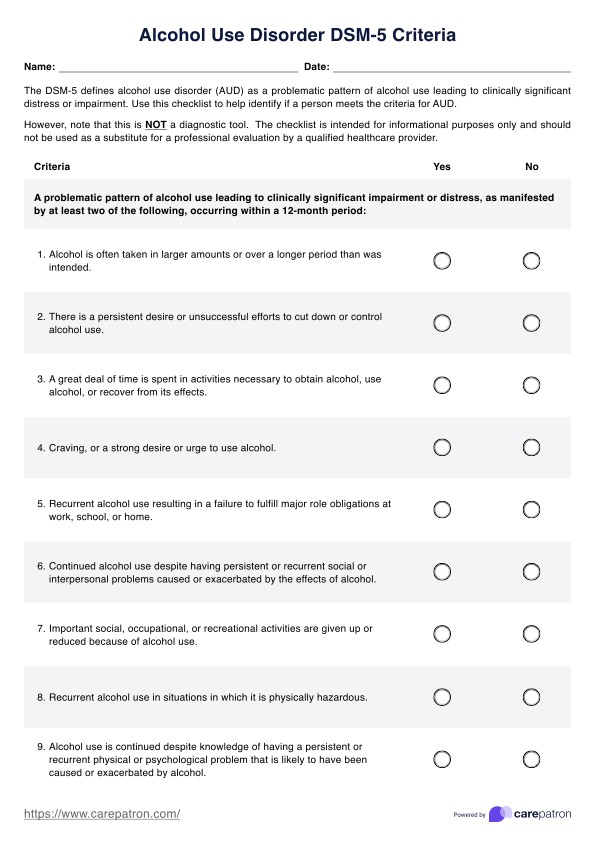The DSM-5 defines alcohol use disorder (AUD) as a problematic pattern of alcohol use leading to clinically significant impairment or distress, characterized by at least two of 11 criteria occurring within 12 months. These criteria include a strong desire or craving to use alcohol, failure to meet obligations due to alcohol use, continued use despite social or health problems, withdrawal symptoms, and tolerance, among others. The severity is classified as mild (2-3 symptoms), moderate (4-5 symptoms), or severe (6 or more symptoms).

Alcohol Use Disorder DSM-5 Criteria
Learn more about alcohol use disorder. Download a free Alcohol Use Disorder DSM-5 Criteria template here.
Alcohol Use Disorder DSM-5 Criteria Template
Commonly asked questions
The DSM-5 F codes for alcohol use disorder are based on severity and whether remission criteria are met. For example, F10.10 is used for mild alcohol use disorder without complications, and F10.20 is for moderate to severe alcohol use disorder. Additional specifiers, such as remission status, withdrawal, or other complications, further modify the specific F codes.
The DSM-5 combines the DSM-IV’s separate categories of "substance abuse" and "substance dependence" into a single diagnosis called "substance use disorder," which encompasses a broader spectrum of severity. The DSM-5 uses 11 criteria, compared to the DSM-IV’s separate lists for abuse and dependence. Additionally, the DSM-5 introduces "craving" as a criterion and eliminates the requirement for legal problems, which was included in the DSM-IV criteria for abuse. The number of criteria determines severity in DSM-5 met, enhancing its clinical utility.
EHR and practice management software
Get started for free
*No credit card required
Free
$0/usd
Unlimited clients
Telehealth
1GB of storage
Client portal text
Automated billing and online payments










